HTC EVO 3D vs. Motorola Photon 4G: Choosing the Best Sprint Phone
by Anand Lal Shimpi on August 17, 2011 11:11 PM ESTSprint customers almost always get the short end of the stick. In exchange for some of the more reasonable smartphone plans in the US, Sprint customers typically enjoy a mediocre selection of phones. Over the years there have been a few that have stood out. The Palm Pre and EVO 4G both come to mind. But generally speaking, all of the cool phones go elsewhere. In fact, the last Sprint phone we reviewed was the Samsung Epic 4G and that was almost a year ago. Of course more phones have debuted on Sprint since then, they just haven't been all that interesting.
Until now of course.
Today we have Sprint's two flagship Android smartphones: the HTC EVO 3D and the Motorola Photon 4G. Despite naming differences both support Sprint's 4G WiMAX network, have dual-core SoCs and boast 4.3-inch screens, but these two are far more different than you'd expect.
The EVO 3D uses a 1.2GHz Qualcomm Snapdragon S3 (MSM8660) and can capture/display 3D content. Meanwhile the Photon 4G is NVIDIA's debut phone on Sprint, featuring a 1GHz Tegra 2 and a high resolution 8MP rear camera sensor.
Before we get too far down the internal comparison, let's talk about the hardware itself first.
| Sprint EVO 3D vs. Photon 4G | ||||
| EVO 3D | Photon 4G | |||
| Height | 127 mm | 126.9 mm | ||
| Width | 66.0 mm | 66.9 mm | ||
| Depth | 11.9 mm | 12.2 mm | ||
| Weight | 170g | 158g | ||
| SoC | 1.2GHz dual-core Qualcomm Snapdragon S3 MSM8660 | 1GHz dual-core NVIDIA Tegra 2 | ||
| GPU | Qualcomm Adreno 220 | NVIDIA ULP GeForce | ||
| System Memory | 1GB | 1GB | ||
| NAND |
4GB NAND internal 8GB SanDisk class 4 microSD preinstalled |
16GB NAND internal |
||
| Display |
4.3" 3D qHD - 960 x 540 LCD |
4.3" qHD - 960 x 540 RBGW PenTile LCD |
||
| Display Output | HDMI via MHL | microHDMI | ||
| Front Camera | 1.3MP | 0.3MP | ||
| Rear Camera | 2 x 5MP 3D w/ Dual LED Flash | 8MP w/ Dual LED Flash | ||
| Battery | Removable 6.57 Whr | Removable 6.3 Whr | ||
| Shipping Android Version | 2.3.3 | 2.3.4 | ||
| Contract Price | $199 ($549 off-contract) | $199 ($549 off-contract) | ||
The physical comparison boils down to personal preference. The Photon has a lighter and more plasticky feel while the EVO 3D feels more dense and higher quality. Both are awkwardly large thanks to their 4.3" screen size, but the matte and textured finish of the EVO 3D actually does make it easier to hold than the Photon.
Where the Photon starts winning back points is with its kickstand. I've always been a fan of integrated kickstands and the Photon's is no exception. It's convenient for anyone that keeps their phone on a desk, uses it as an alarm clock or watches a lot of movies on it. Although I can't bring myself to spend two hours staring at a smartphone screen (even a large one), I know it's something that people do and the kickstand can be quite useful for those folks. Unfortunately you can't control the angle of the kickstand, so if you're super tall and seated in coach it may not be all that convenient.
Stylistically the EVO 3D takes a more conservative but well received approach, while the Photon tries something new with its long-octagon shape. There's nothing gained by Motorola chopping off the corners of the Photon, it's just different.
The Photon's atypical styling extends to the volume rocker as well. While the power/lock button is fairly standard, the volume rocker is textured with horizontal slits. Button presses are not firm but not mushy either.
The EVO's buttons by comparison are more traditional but extremely low profile. The obvious exception being the massive camera shutter release button, which feels good but not as great as you'd expect. It's also slightly disappointing that unlike on a WP7 device, hitting the camera button doesn't automatically bring the phone out of sleep and drop you into the camera app. If the EVO is unlocked and awake however, the button does just that.
To play up the 3D gimmick make it easier to switch between 2D and 3D shooting modes there's a physical toggle switch on the EVO 3D, next to the shutter release button. You only need the toggle for capture, when playing back content the display automatically switches between 2D and 3D modes.
Pulling off the back cover is far easier on the Photon. The EVO 3D makes you pull a little too much and some of the notches don't seem like they want to let go. Unlike some more recent HTC phones, the EVO 3D doesn't include any antennas in the rear cover - everything is baked into the body of the phone.
Both phones feature a removable battery. The EVO 3D has a 6.57 Wh unit while the Photon 4G's battery weighs in at 6.3 Wh. Behind the battery is a microSD card slot (with an 8GB card) on the EVO 3D. The Photon 4G on the other hand comes with no microSD card installed (but 16GB of NAND on-board) in addition to a SIM card. The Photon 4G includes a Qualcomm MDM6600 that gives it HSPA+/GSM support. The full list of supported networks and frequencies is below:
| Network Support | ||||||
| Total System Power | WiMAX | CDMA | WCDMA | GSM | ||
| HTC EVO 3D | 2.5 - 2.7GHz | 800/1900MHz | N/A | N/A | ||
| Motorola Photon 4G | 2.5GHz | 800/1900MHz | 850/1900/2100MHz | 850/900/1800/1900MHz | ||
If you're in need of a phone that can be used overseas, the Photon 4G is your only option of these two. The EVO 3D can only work on Sprint's CDMA and WiMAX networks.
The EVO 3D and Photon 4G both support HDMI out but through very different approaches. Motorola uses a standard micro HDMI connector, while HTC uses a MHL USB connector. When used with a standard USB cable the MHL USB connector acts like a normal micro USB port for charging and data transfer. If you've got an MHL to HDMI cable however you can get HDMI out of the phone. Unfortunately neither company ships their phone with the appropriate cable to get video output. With the right cable both phones support mirroring over HDMI.















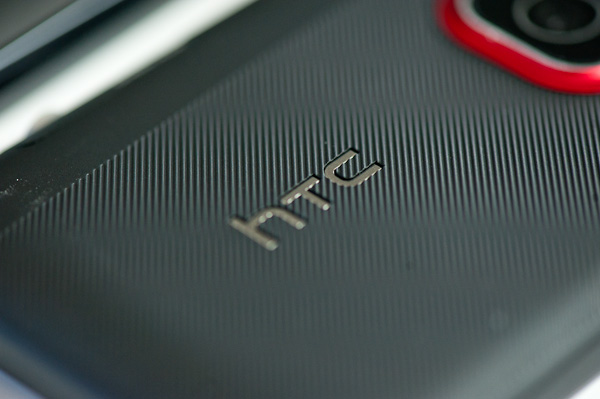
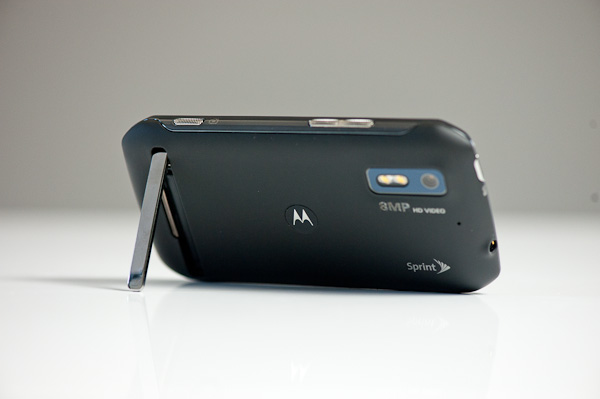
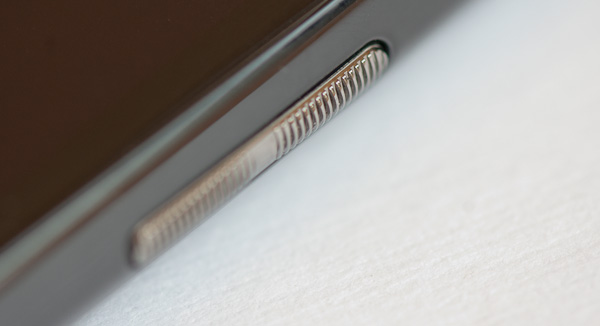
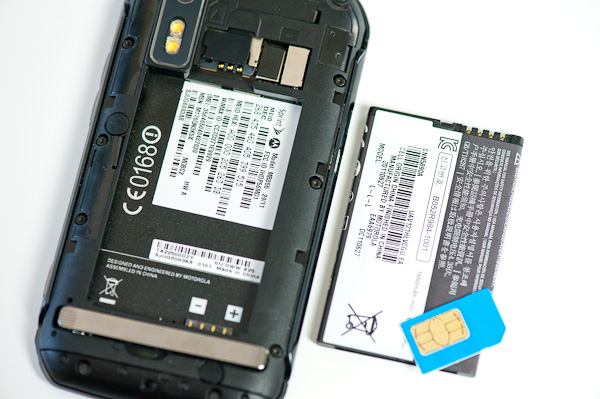
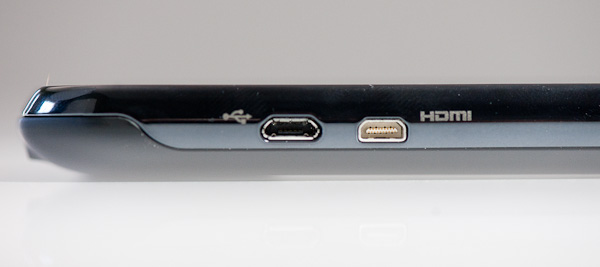








43 Comments
View All Comments
Someguyperson - Thursday, August 18, 2011 - link
I personally really like CF Bench. It gives a comprehensive breakdown of many, many criteria including my favourite tests, efficiency tests. It was also made by an XDA developer, so you know it's good.jonyah - Thursday, August 18, 2011 - link
I find it hard to believe the tegra2 can come anywhere close to the snapdragon in performance. My 2 tegra2 tablets (transformer and gt 10.1) are dog slow compared to my 3vo. Could that be because of honeycomb?Death666Angel - Thursday, August 18, 2011 - link
Hello!I am from Germany and I really don't get how the US cellphone market works. Here, I can either just buy any phone and get any contract with any carrier for that phone. Or I can buy a phone via carrier (anywhere between 1€ and ~200€ for smartphones) and get a contract to go along with that (sometimes that are locked to that carrier (SIM lock) but the carrier I have doesn't do that and it's easy to get around). However, that same contract is going to cost about 10, 15, 20, 25€ more than without a new phone, so over the course of the 24 month contract it usually comes out to mean that the phone via contract cost a bit more than the phone off contract. Sometimes people get lucky and you get a phone-contract-deal that works out to be cheaper over 24 months than if you had actually bought the phone yourself, they are referred to as "Schubladenvertrag" ~ contract for the drawer, because you just use it to get the phone cheaply).
Most carriers however carry pretty much all phones that are on the market with the exception of a few carrier specific ones (T-Mobile hat the G1, first Android phone here I think and until last year or so, the iPhone4 was also T-Mobile only). And if they don't carry it I can always buy it on my own and get a contract with them anyway.
Also, if you buy a data plan here you usually get a flat-rate and it runs high speed up to xxx MB (300, 500, 1GB, 2GB, 5GB are common break points) and then throttles down, but you won't have to pay any more money.
From the reviews it seems that the US market works differently somehow. I would like to hear more about it from you guys. :-)
P.S.: Going to read the review now, wanted to comment beforehand!
sprockkets - Thursday, August 18, 2011 - link
Basically, it works like this: Our government allows the telcos to screw us over.http://www.pbs.org/cringely/pulpit/2007/pulpit_200...
manthas - Thursday, August 18, 2011 - link
The GLBenchmark 2.0 - PRO is missing the Motorola Photon entirely. I suspect it sits right next to the Atrix performance wise, but very odd considering the subject of the article.fic2 - Thursday, August 18, 2011 - link
I find it interesting that the Photon is basically a world phone. I didn't think that Sprint sold any phones that could be used anywhere. Definitely makes it interesting.Impulses - Thursday, August 18, 2011 - link
Motor XPRT is also a world phone and has been out for months (small Android phone with portrait QWERTY), they've had various Blackberry world phones in the past too. Honestly, i think Sprint has had one of the best phone lineups over the last 12-24 months, if not the best.They had the Hero when AT&T still didn't have any Android phones (and before the Droid came out). Around that time they also scored the Pre exclusive (which may ultimately have helped Palm's demise, but nonetheless). When Android competition really heated up last year they came out with two phones that really complement themselves in the Epic & EVO, both had front facing cameras and 4G.
I dont think any other carrier could claim having both a slab and slider with top shelf specs and features like that. T-Mo had competing devices in ththe Vibrant and G2 but neither had front facing cameras and the Vibrant didn't have HSPA+. Similar scenario for VZW with the Droid X etc. Heck AT&T just had the Captivate for the longest time as it's only worthwhile Android phone.
VZW probably has the biggest lineup but it's not always the most varied, too many mid-to-high end slabs and not enough sliders and low end models. T-Mobile's G-line with plain Android builds has it's own appeal, but Sprint has had a nice balance and plenty of mid range models to complement it's high end.
Heck, VZW and AT&T still have only one dual core phone each no? To Sprint & T-Mobile's two apiece...
MilwaukeeMike - Friday, August 19, 2011 - link
As a Sprint user of an Evo '3G' (my Evo won't be 4G until Sprint turns it on in Milwaukee.) I'm done with sprint when my contract is up. We own these phones to be connected, and my 3G speeds are almost always below 200kbps and often under 100. i want to use my phone to browse the web while on the bus to/from work, and I have to click a page, and stare out the window for a minute while it loads. Forget Netflix or youtube.I've spent time in Chicago, but haven't been able to hold on to a 4G signal long enough to do a speed test more than once or twice. It always drops.
it's not just my phone either... my wife has an Evo shift and has the same slow connection and can't hold a 4G signal in Chicago either.
It was a funny phone call when the sprint rep called me to suggest I subscribe to their 4G hotspot service so I could drop my home internet connection. I had to explain to her that her company doesn't offer 4G where I live... and it sounds like you can't stay connected to it anyway.
Unless you KNOW Sprint is connected in your city, I'd go with someone else if you have the choice.
judasmachine - Saturday, August 20, 2011 - link
Motorola's dock has gotten far more useful than HTCs. This is coming from a guy who likes Sense far more than *Blur.bo3bber - Monday, August 22, 2011 - link
First off, a BIG thanks for posting some actual photos from the Evo 3D camera. No other reviewer has done this.I use the NVidia 3D Vision glasses, with an Acer H5360 projector, which gives absolutely phenomenal results. Anybody dismissing 3D needs to run this setup first.
As part of that, I typically use 3D about 4 to 5 hours a day. Most people will say that's a recipe for headaches, but the short answer is that you need to set the system up so that you do not get eyestrain.
In this review, you noted that eyestrain was an issue, and that you couldn't see using it for a long time. Based on looking at your photos with my setup, and extensive experience with all things 3D, I can say that the problem is that the photos are taken with convergence set to high. The photos as taken cause me eyestrain on my PC setup. If I turn down the convergence a bit, it goes back to being comfortable.
(The convergence is what gives a pop out of the screen effect. If this is turned up high you get a lot of pop at the expense of eyestrain.)
Unfortunately, it doesn't look like it is adjustable on the Evo 3D.
One other issue with the photos is that the left and right images are at different brightness or glare. It is also possible that one lens was smudged. This gives a pulling effect as your brain tries to focus upon the best eye. This is the same effect you can get in game, if an object only shows in one eye.
When done well 3D can be really great. Unfortunately in today's world there are a lot of terrible setups, and this might be one. If they are taking the photos with deliberately high, unadjustable convergence, that would be a huge error- leading people to think 3D itself is flawed.